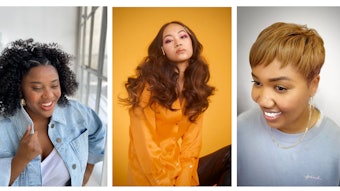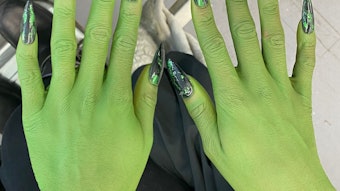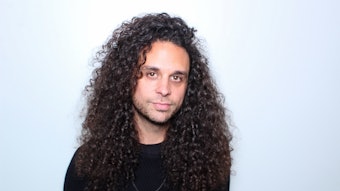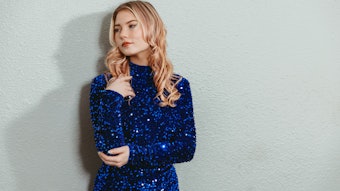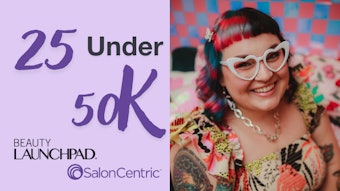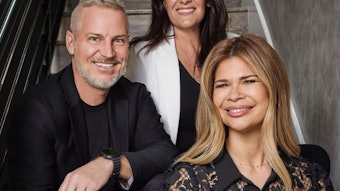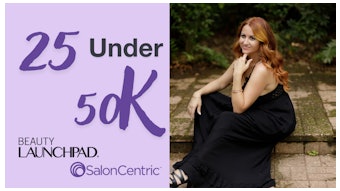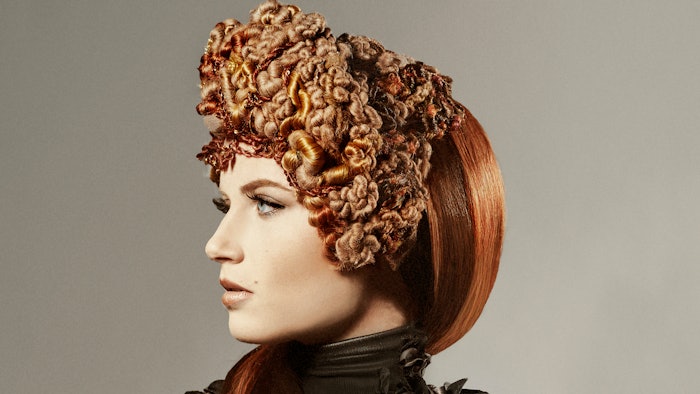
Designer: Atelier Benson @atelierbenson
Teresa Romero, Sam Villa ambassador and art/education director at Jose Luis Salon (Austin, Texas), has been a creative director on numerous shoots, including many Trade for Print (TFP).
TFP is when each person agrees to barter their talent in exchange for images. It's a great way pull off a shoot on a small budget and collaborate with other talent such as new photographers, fashion students and novice models.
TFP work helps participants build skills, generate contacts, meet new talent, get published, create content for contests/social media and above all, create art.
"It was on a TFP shoot that I met photographer Nico Nordstrom," says Romero. "That one shoot led to many more collaborations with her, resulting in recognition as a NAHA finalist four times and winning the Wella Trend Vision Salon Team award [among other accolades]."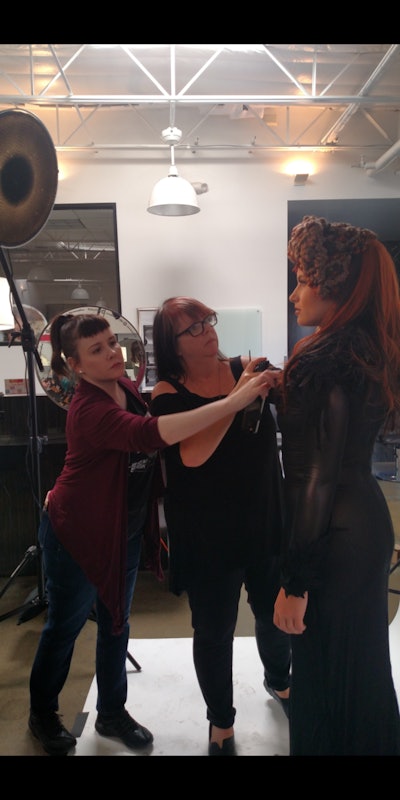 Hair and Makeup : Teresa Romero @_teresa_romero
Hair and Makeup : Teresa Romero @_teresa_romero
Designer: Atelier Benson @atelierbensonPhotographer: Nico Nordstrom @niconordstromphoto
Romero's Tips for Coordinating a TFP Shoot:
- Polish Social Channels: Fewer professional posts are far better than many 'okay' posts. Make a good impression so others want to work with you. Get to know the talent in your area by searching local hashtags on Instagram and local photography/makeup artists/model groups on Facebook. For example, in Austin, Texas, search: Instagram #austinphotographer, #atxphotographer, #atxmodel, #atxmakeupartist or on Facebook Austin Photography and Models. Follow the inspiring creatives, like their work, review their websites and look for new opportunities they may be initiating.
- Research and Reach Out: Look for photographers who shoot the style you're looking for, but don't limit yourself, as many look for ways to expand their portfolios. For example: A wedding photographer's focus is to capture a memory (not hair/makeup)— however, they may be interested in a creative project. The same for clothing stylists, designers and makeup artists. Reach out on social and keep it short: Initiate a conversation with, "I really like your work—I'm a hairstylist looking to do a TFP photo shoot. Would you be open to discussing further?" Even more experienced creatives do TFP shoots.
- Expectations for Image Use: There must be clear expectations for how and when the images can be used. Is it a test shoot or for a publication…social media or both? What is the focus…hair, makeup, fashion? How soon will the team receive images…and who is doing the retouching and distribution of the final shots? Note: The media likes exclusive material, so usually those images cannot be shared on social until after the exclusivity time frame lapses.
- Image Selection: Typically this is done by the photographer, and they own the rights to the images; however, if you organized the shoot, request to be part of the process. The important thing is to be respectful and only utilize the best of everyone's work.
- Submissions: Communicate with each other and come up with a plan.
- Media—Make sure the photographer and organizer of the shoot give permission first before images are pitched to the press. Discuss in advance and provide talent with releases that clearly state who can do what with the images.
- Contests/Social/Portfolios—Always credit the talent involved in the shoot and always be positive. Do not post photos from behind the scenes or any finished looks; this can disqualify an entry from some contests and most magazines.
